liebenswertes Camelidynamics Klicker Training von Alpakas in Videos von Nina Faust aus Alaska
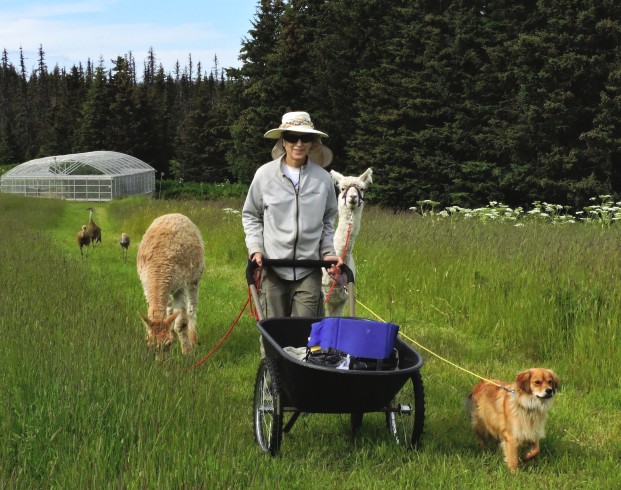
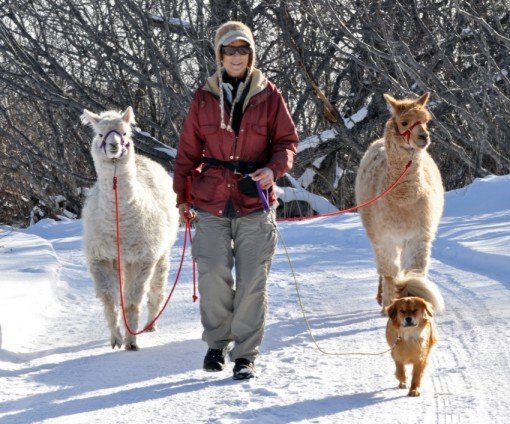
Nina Faust lebt in einem Naturschutzpark in Homer Alaska und vereinigt in der ureigenen Arbeitsweise mit ihren 2 Alpakas mit der Achtsamkeit von Camelidynamics und dem Clicker Training nach Karen Pryor. Das Ergebnis ist tiefes Vertrauen zwischen Mensch und Tier das langsam und stetig wächst.
Nina Faust verbringt mit ihren beiden Alpakas zur privaten Freude mehrere Stunden jeden Tag und setzt ihre ganze Liebe und Kreativität für ihre Alpakas ein und probiert selbst viele neue Wege aus um schwierige Themen wie z.B. Tierarztbehandlungen oder Nägel schneiden mit Kameliden für beide Seiten angenehm und entspannt verlaufen.
Da in Alaska viele Monate Winter mit tiefem Frost und hohem Schnee herrscht investiert Nina viel Energie um ihren 2 süßen Alpakas Bereicherung und Abwechslung zu bieten. Sie übt mit den Alapaks mit Hilfe des Klickertrainings Hürdenläufe und Parcourläufe und studiert mit ihnen kleine Tricks ein. Zudem hat sie ihren Liebsten Jungs viele interessante Spielzeuge gebastelt und ihnen Karottentorten ins Eis zum Suchen versteckt.
Sie hat die einmalige Gelegenheit in ihrem abgeschiedenen Naturschutzreservat genutzt den Alapaks OHNE Führleine freies Wandern zu lernen -wo sie leben sind glücklicherweise keine Strßen und Menschen als Gefahren da - aber es gibt genügend wilde Tiere.
Nina Faust war früher Lehrerin und hat die Zeit der Rente gemeinsam mit ihrem Ehemann, einem Wildnis-Biologen, genutzt und sich einen Lebenstraum zu verwirklichen - den Aufbau und die Erhaltung des Kachemak Crane Watch Parks
Nina Faust ist ein außergewöhnliche Frau für die ich große Hochachtung habe - mit einem besonders engagiertem Lebenslauf für die Bewahrung der Umwelt, der Naturbeobachtung und das Beglücken der Tiere.
Nina hat mir sehr großzügig viele Fotos und englische Texte zur Beschreibung ihres Lebens und ihrer 10 Jahre langen Arbeit mit den Alapaks extra für meine Webseite gesendet und sie hat mit ihren Empfehlungen die Entstehung meiner Webseite maßgeblich mit beeinflusst und mir zu mehr Klarheit in der Ausrichtung meiner Informationen verholfen. Ich danke Nina für diese Unterstützung.
Nina schreibt zu mir : Susanne, you have done a nice job putting together a website with the many techniques that make working with these animals so wonderful. I have been so pleased at how Gypsy and Canela have responded to how I have worked with them. It took time and patience and people laughed at me when I said I was going to figure out a way to clip toenails by myself and keep these animals happy. But I must say, it has worked!! I call them my happy Poos. And that now includes my little dog, Chipper
It is nice to see you are trying to provide information for
people with camelids so that they can learn to work with their animals in a
good way. I have seen too many awful videos of youtube where people are not
treating their alpacas well.
These methods are so effective and make the job so much easier, I want as many
people as possible who have alpacas to know there are effective techniques that
really make working with these animals a great pleasure. Keep up the good work
and stay in touch! Nina
In my opinion, I think you should stick with the techniques that further the goals of the type of handling you have featured--trust, respect, learning the animal's behavior so you can work with it, positive reinforcement, safe method--all ways of working with the animal that result in a positive relationship with the animal.
Sometimes I am very surprised at how much mutual trust there is between me and my alpacas. I cannot do everything with them that I would like to, but I find it interesting that they are able to tell me when I am doing something they do not like. For example, I cannot shear Gypsy completely without the vet's help because he has a back injury. However, he lets me do as much as he is comfortable with allowing me to to. When I start on his back in the rear, he turns his head, puts his head on my hand and does a little grrrr sound. So I quit. Nina
Nina Faust hat auch eigene Veröffentlichungen im Camelidynamics
Forum von Marty und beantwortet dort auch Fragen
Nina Faust hat gut verarbeitete Videos in ihrem youtube Kanal frei zur Verfügung
gestellt.
https://www.youtube.com/channel/UC_811-MD2mwpSOxeez5vBGg
Artikel von Nina über bereichernden Umgang mit Alpakas in Alaska
http://www.adn.com/culture/we-alaskans/2016/06/11/alaskas-alpaca-conundrum/
BILDER- GALERIE von Nina Faust
Zum Vergrößern der Bilder bitte auf ein Bild klicken, mit dem Pfeil rechts kann man dann durch die gesamte Bildergalerie navigieren
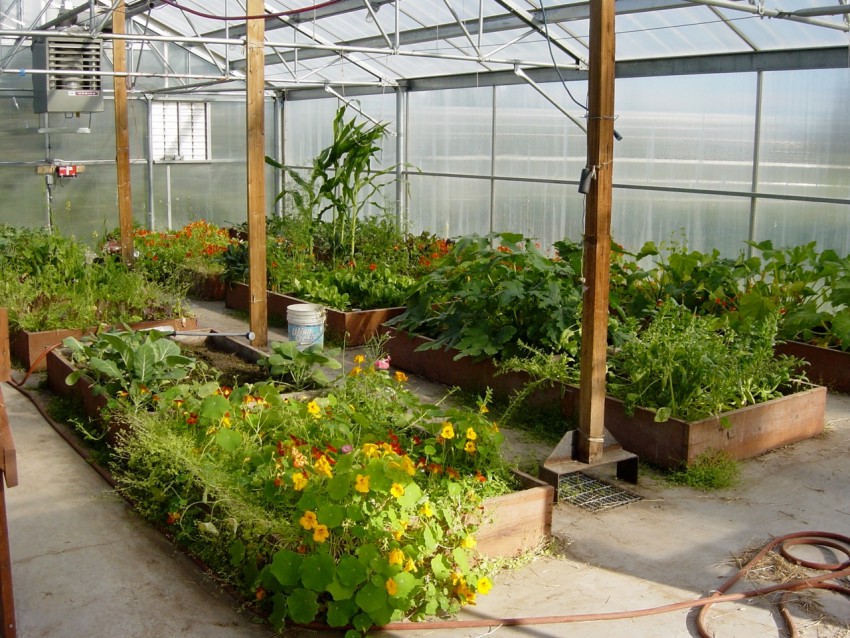
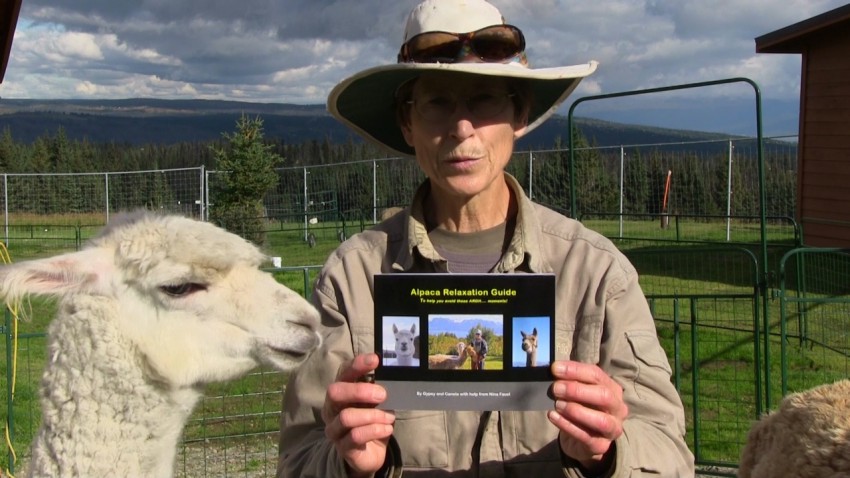
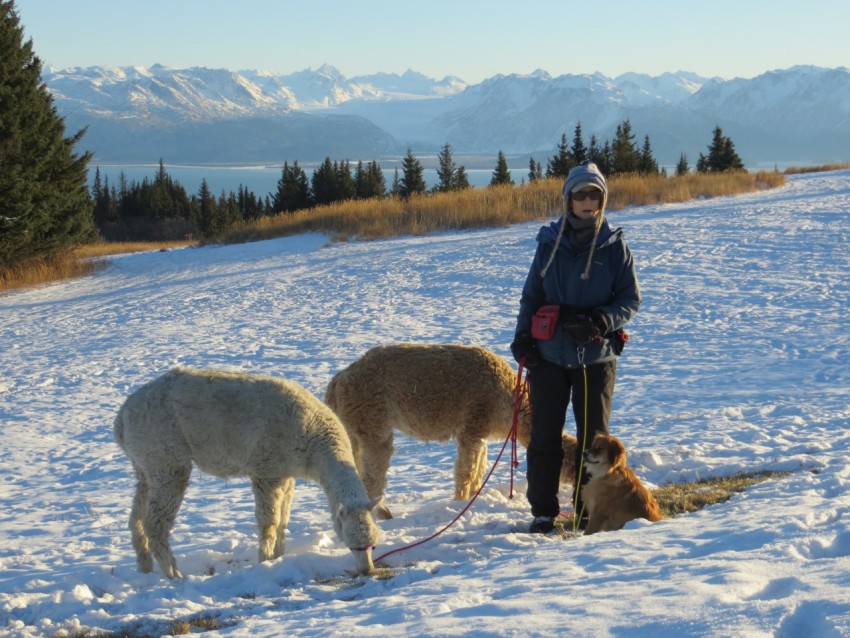
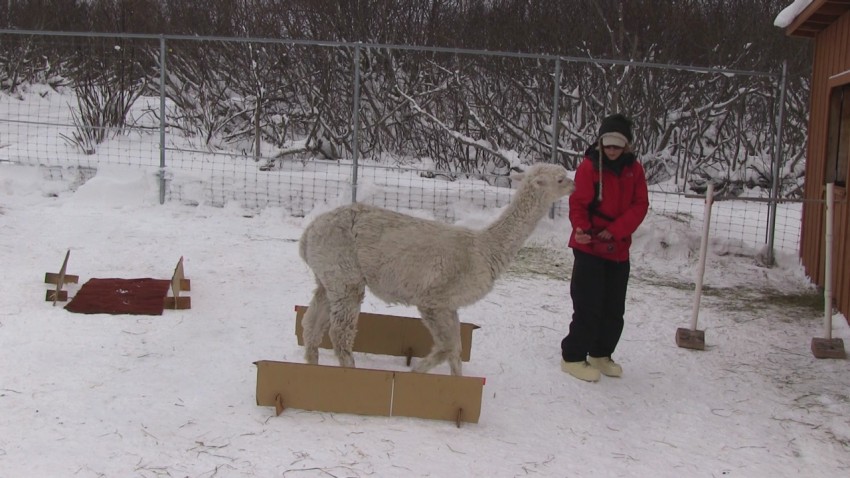
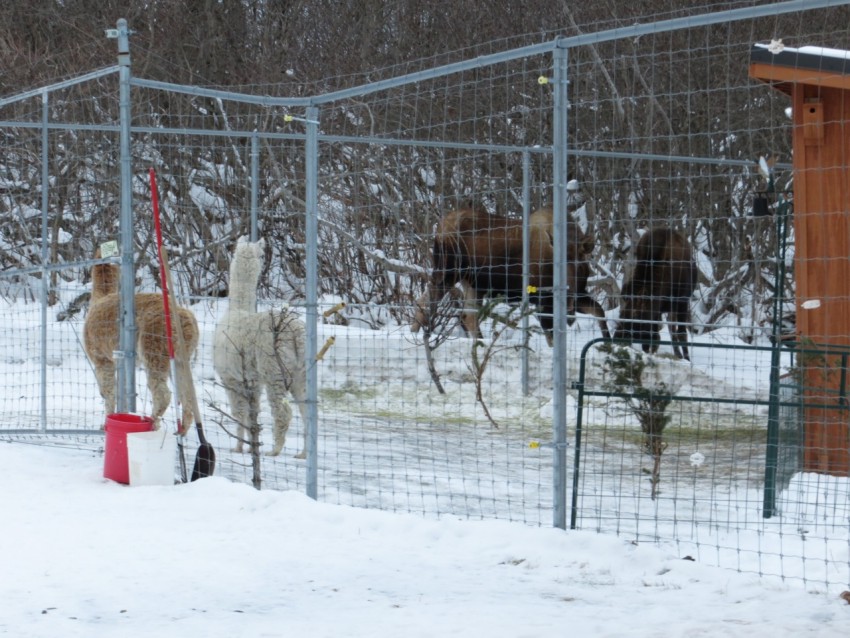
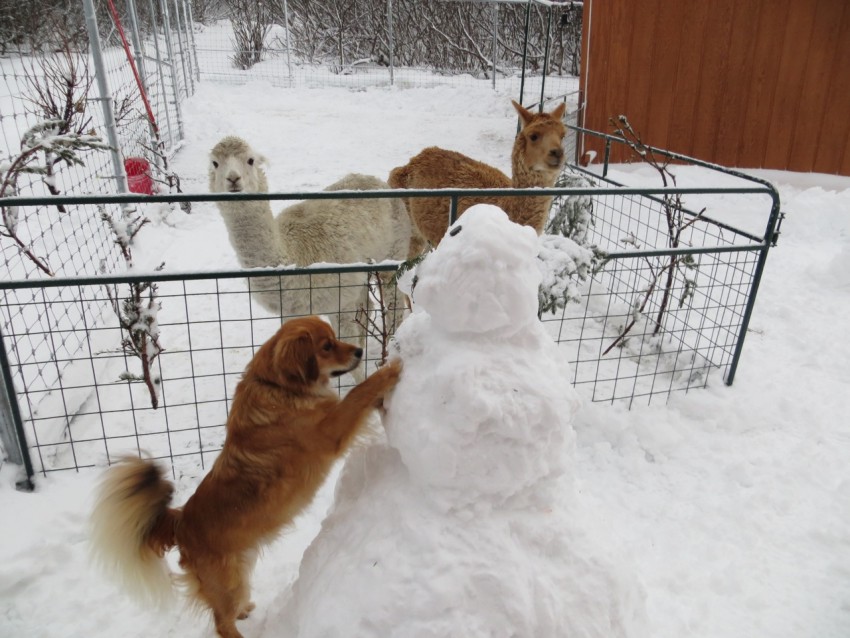
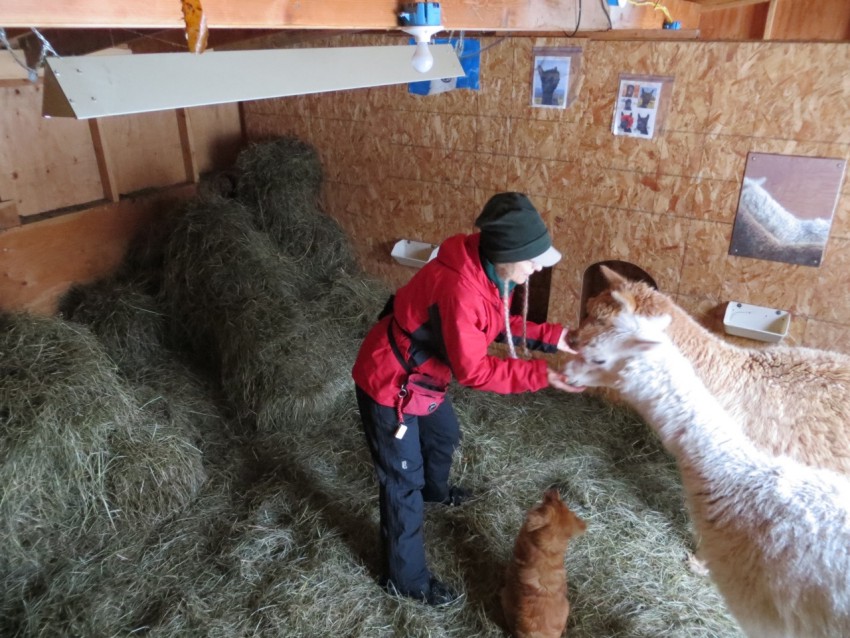
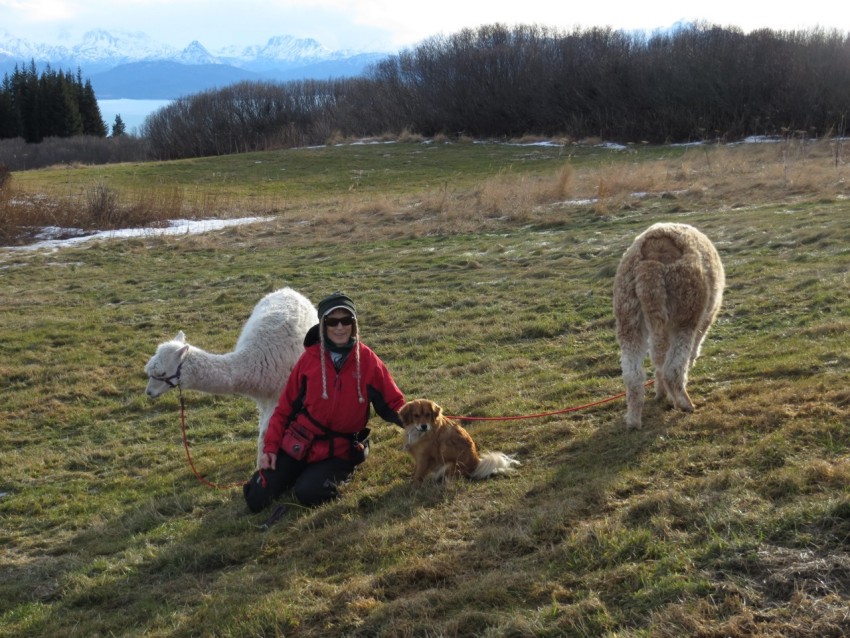
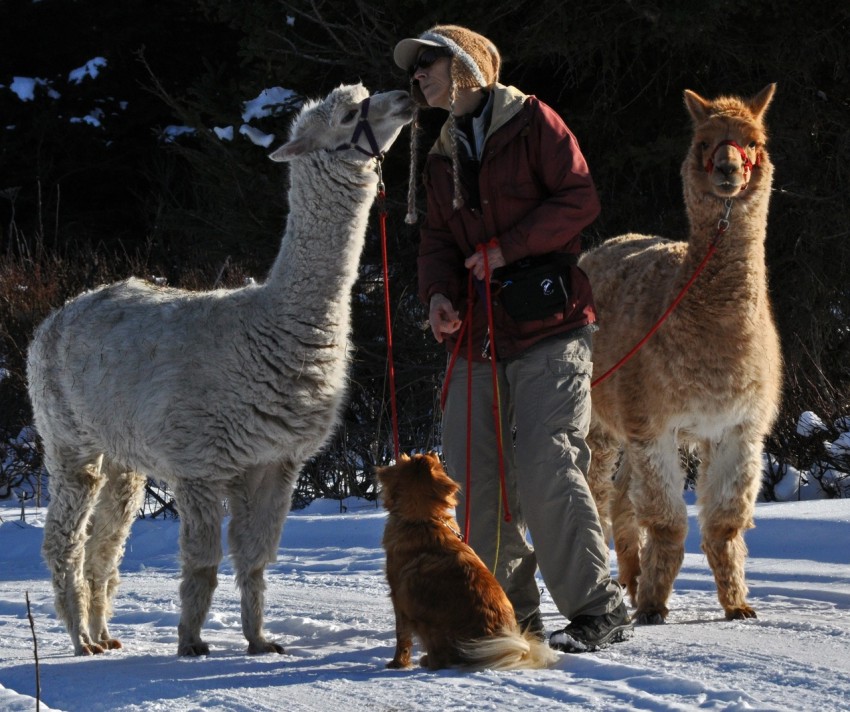
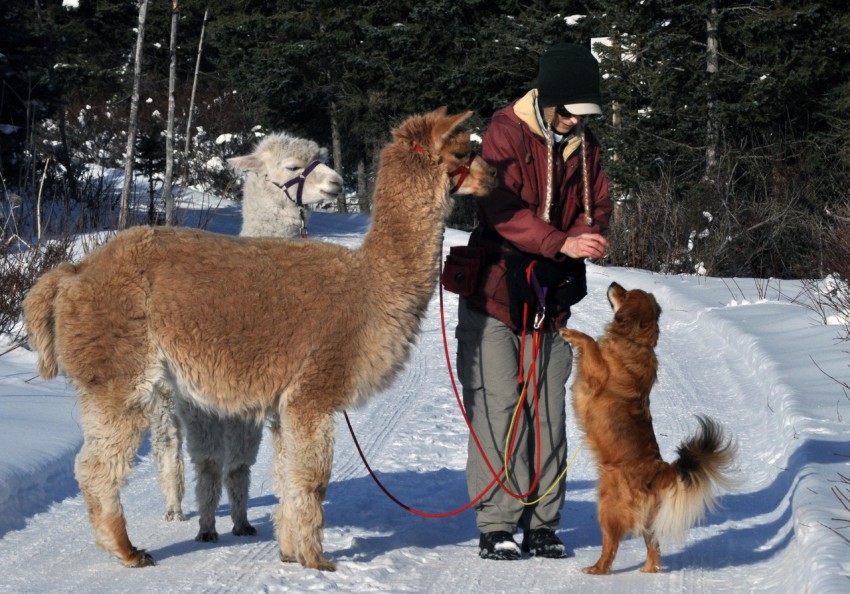
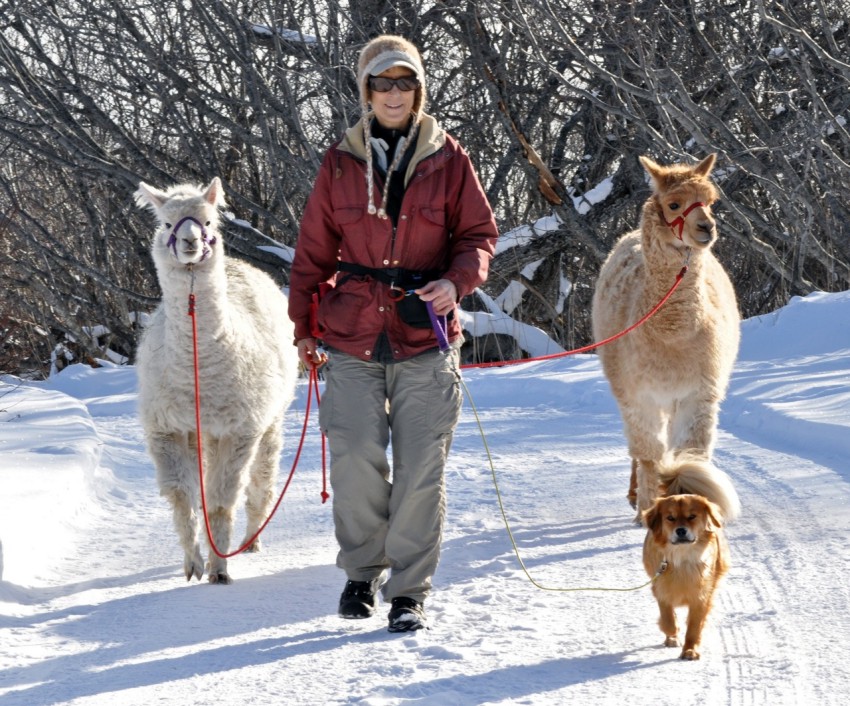
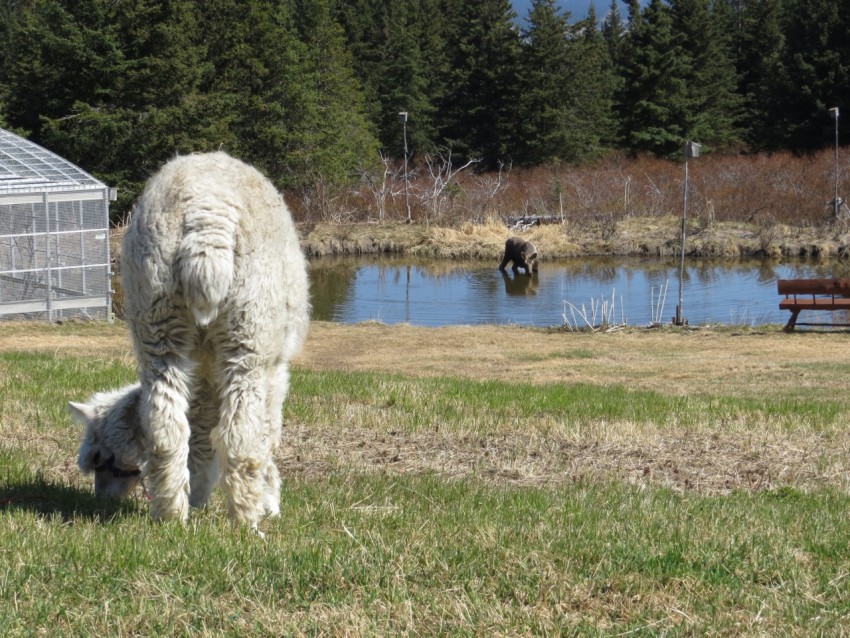
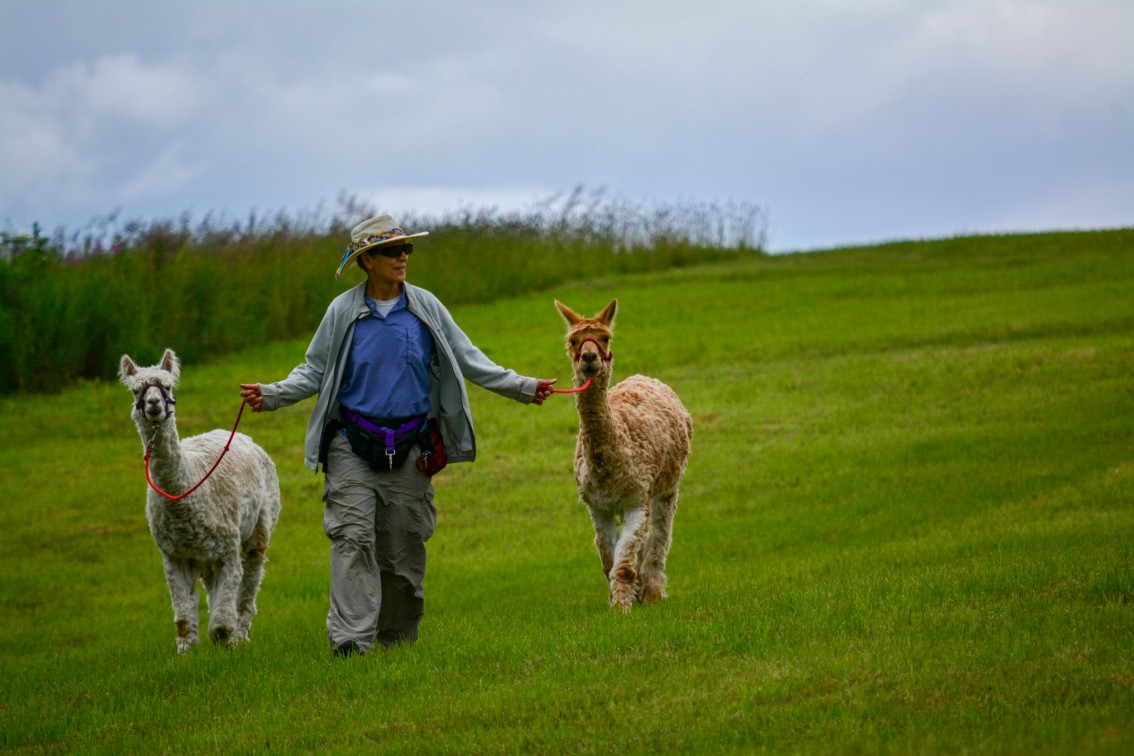
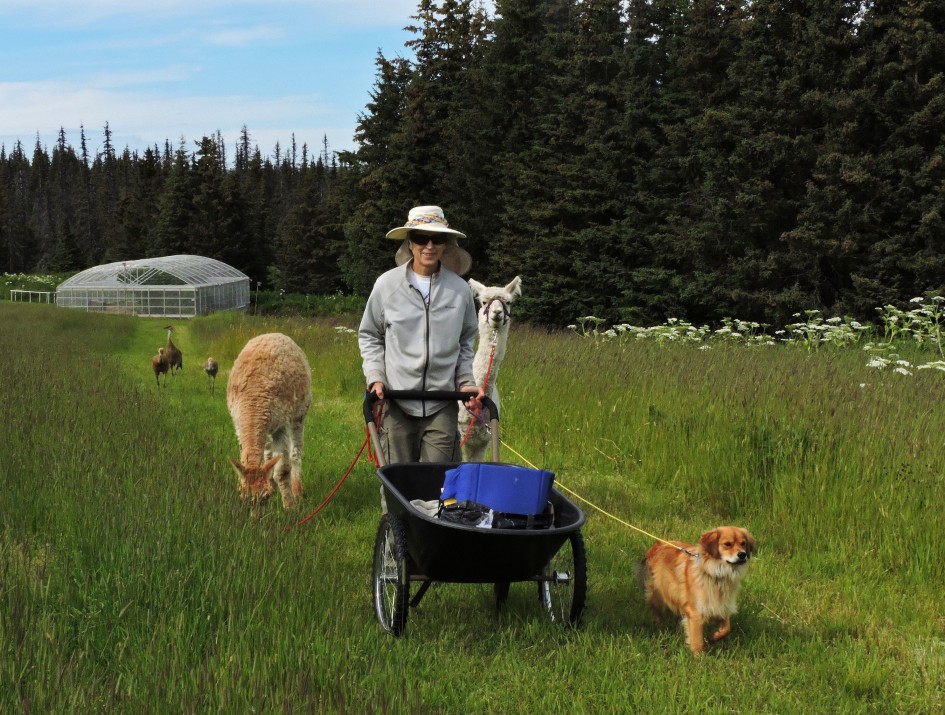
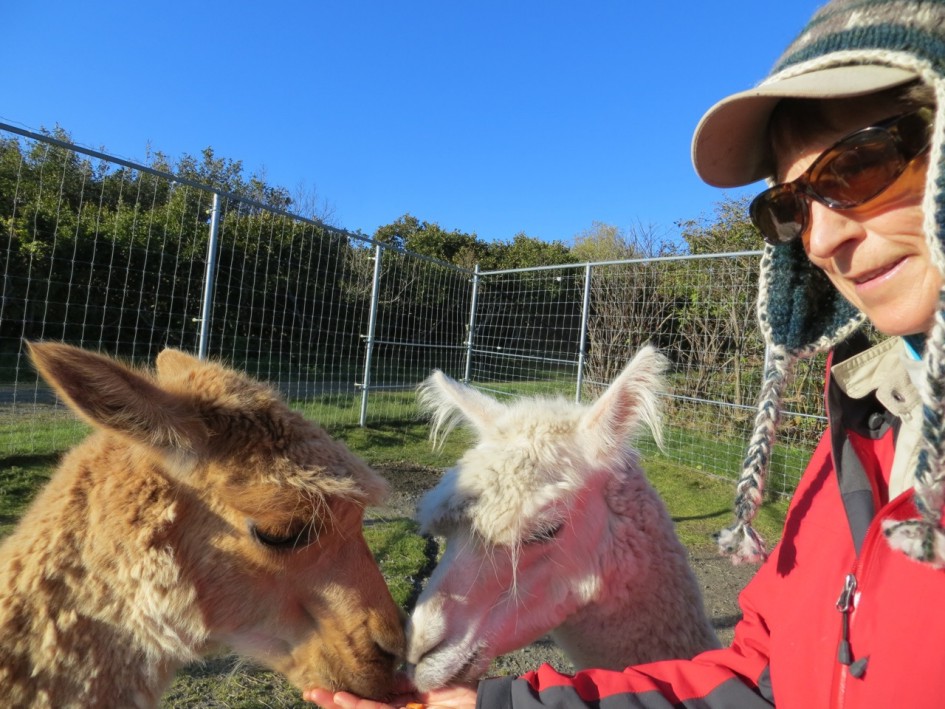
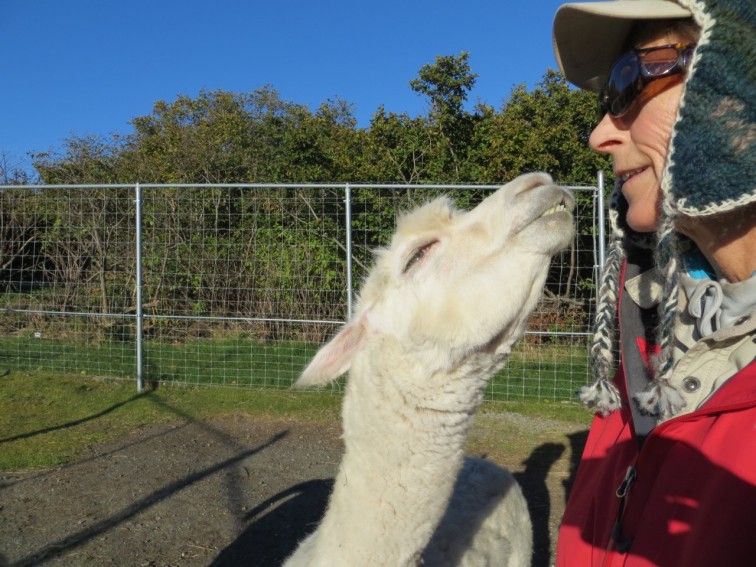
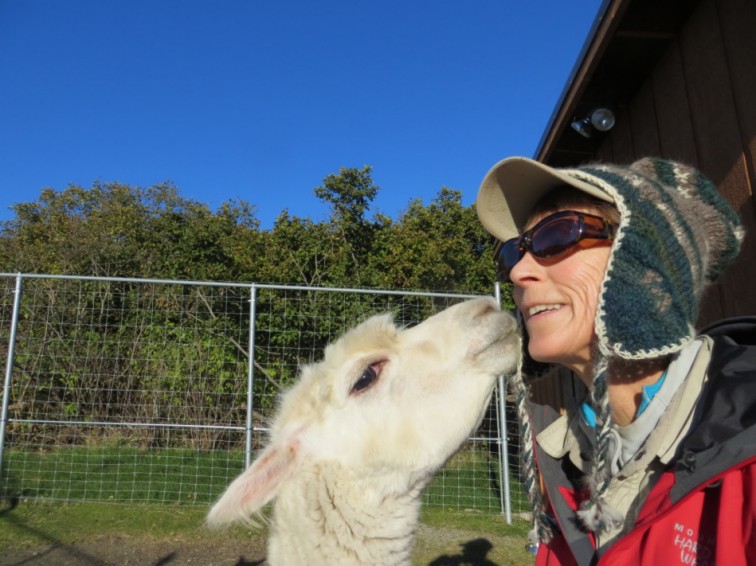
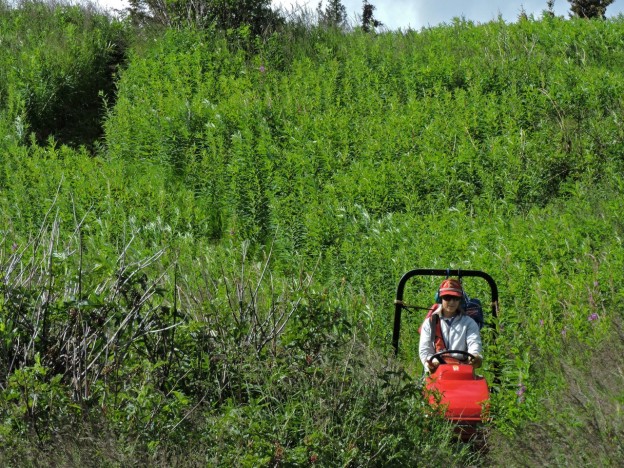
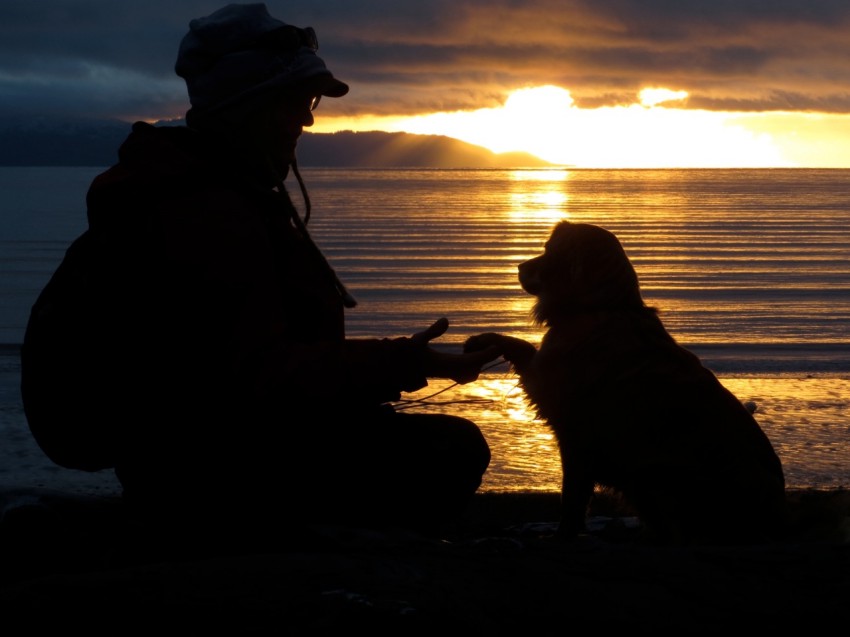
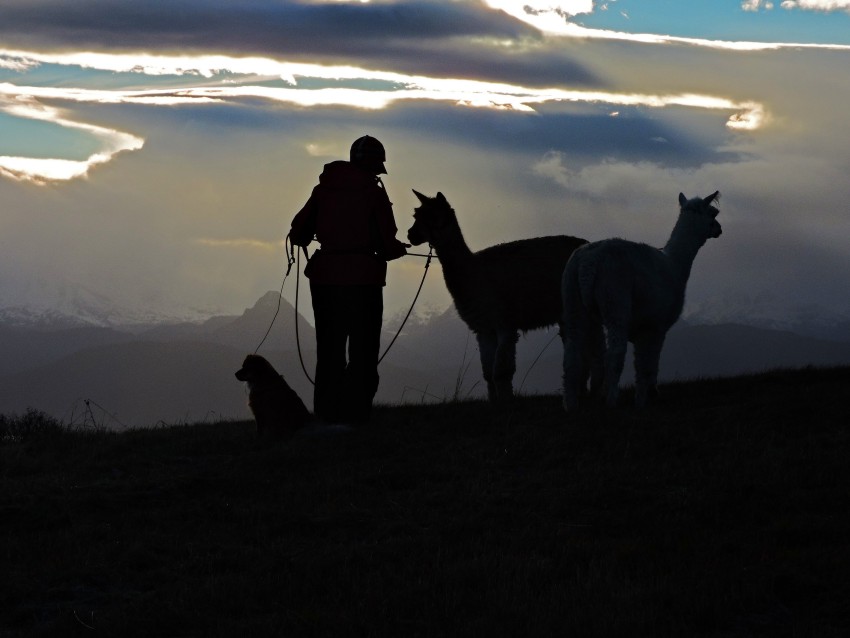
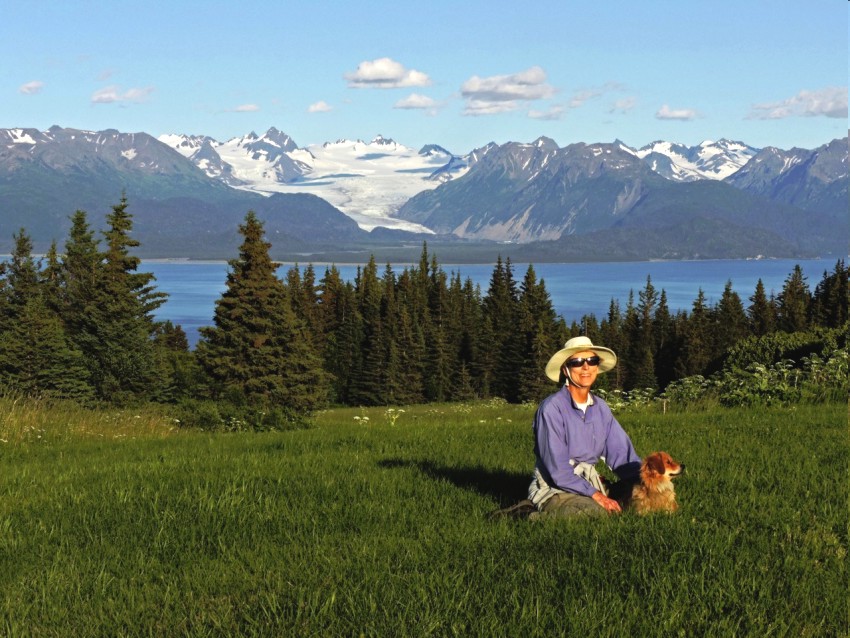

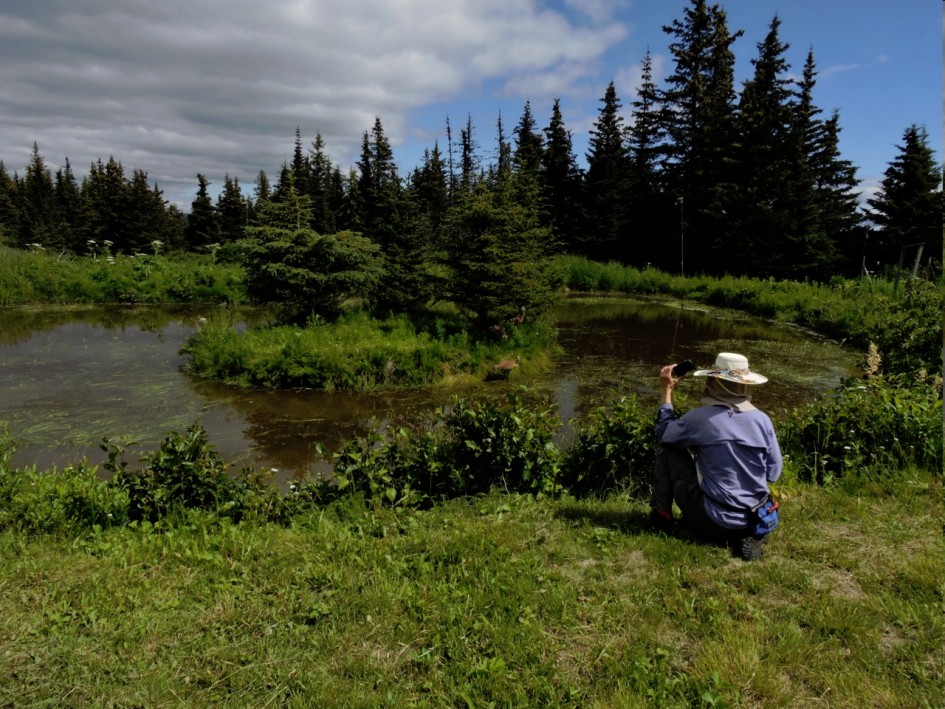
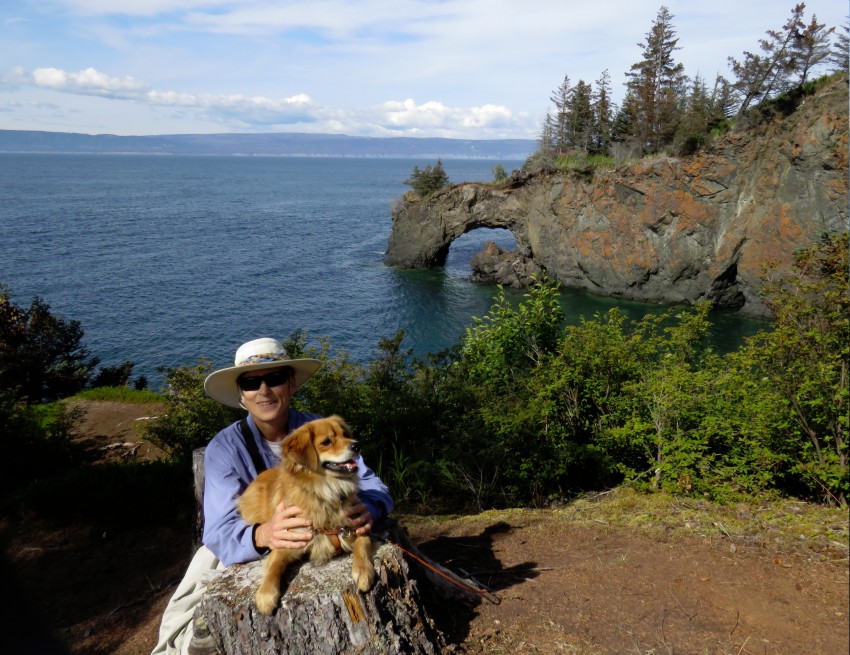
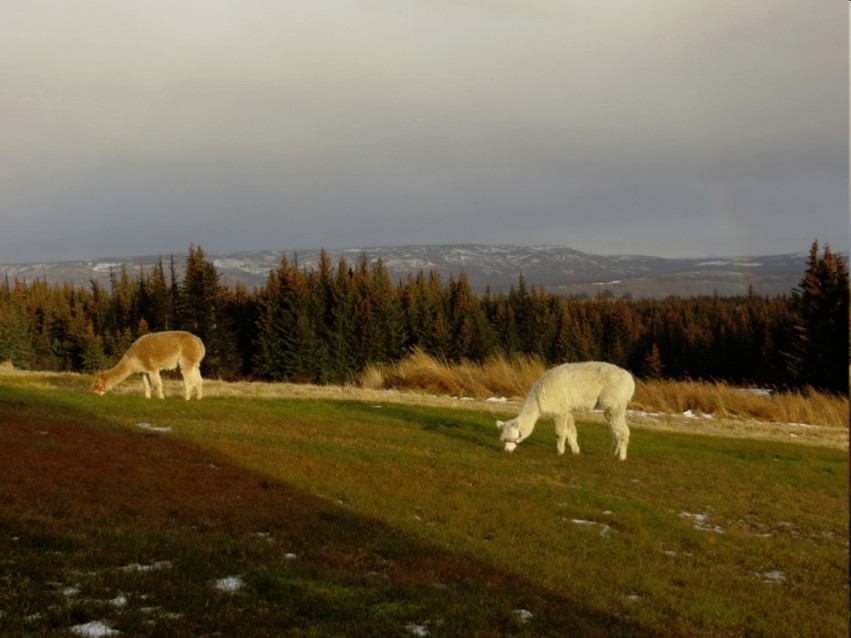
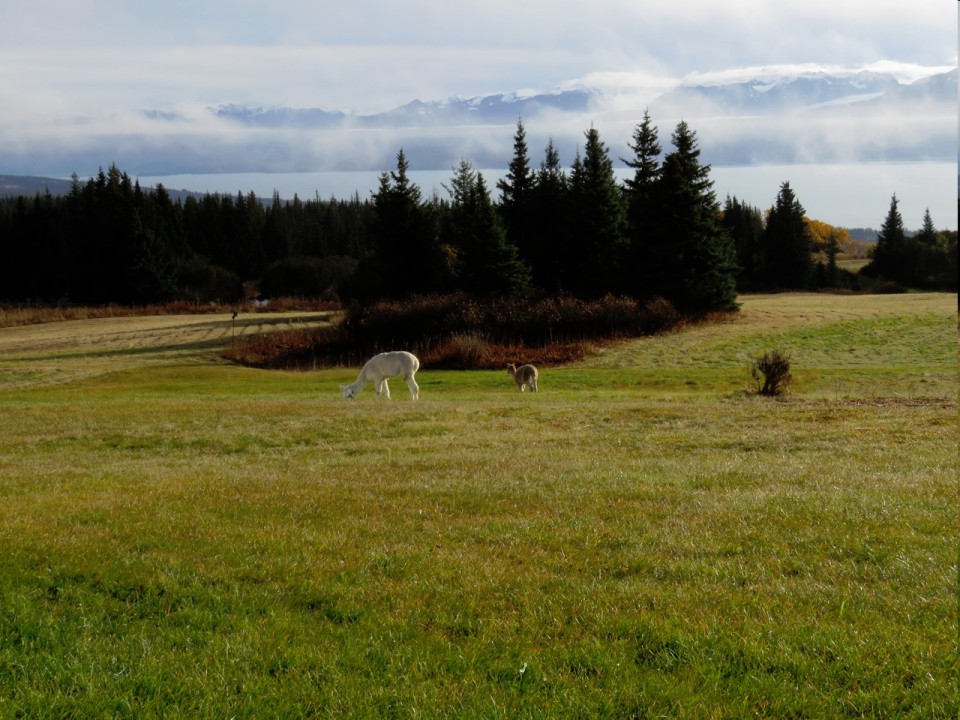


hier die links zu youtube VIDEOS von Nina Faust
Target Training mit Alpakas Klicker Training von Nina Faust
https://www.youtube.com/watch?v=o12Ps1eNscc
https://www.youtube.com/watch?v=M8l8PiO9-AI
https://www.youtube.com/watch?v=L6GuPBMmWq8
https://www.youtube.com/watch?v=3sePAFDkKMs
https://www.youtube.com/watch?v=buPrjigsEH4
https://www.youtube.com/watch?v=ePvCVN0lVPw
Shaping von komplexen Verhaltensabläufen von Alapkas von Nina Faust
https://www.youtube.com/watch?v=cxUNqEZh4DA
https://www.youtube.com/watch?v=9F-XnMaycU0
Hindernislauf, Slalom, Sitzen, Alpaka Klicker -Training von Nina Faust
https://www.youtube.com/watch?v=ZmhfIl428fQ
https://www.youtube.com/watch?v=yhnBV43qswM
https://www.youtube.com/watch?v=pQHTkArTgtA
https://www.youtube.com/watch?v=SQVw8ZrjF_w
https://www.youtube.com/watch?v=cMgBGFuPIrs
https://www.youtube.com/watch?v=lZxDUNoq6lE
https://www.youtube.com/watch?v=vQ9zsLWLQww
https://www.youtube.com/watch?v=6CmT0hr_kUc
https://www.youtube.com/watch?v=9K8l2fHHiBI
freies Halftern von Alapkas von Nina Faust
https://www.youtube.com/watch?v=QTd0TVX0rxo
https://www.youtube.com/watch?v=Ljxv4pCuZMw
https://www.youtube.com/watch?v=mUIcoPYElII
Alpaka Enrichtment- abwechslunsgreiche Spiele mit Alapakas von Nina Faust
https://www.youtube.com/watch?v=qb_yf6-SVxg
https://www.youtube.com/watch?v=-8x3_3a6lGw
https://www.youtube.com/watch?v=4ZQsr0VGLhU
freies Wandern ohne Führseil mit Alapakas von Nina Faust
https://www.youtube.com/watch?v=stIIFM5voeM
https://www.youtube.com/watch?v=soAIzZ6DYbw
https://www.youtube.com/watch?v=gQcXydTX2Zk
https://www.youtube.com/watch?v=e7pO1nOkepk
https://www.youtube.com/watch?v=asiFSY5iRsc
https://www.youtube.com/watch?v=_WXAQrH27R0
https://www.youtube.com/watch?v=u4XQay2r8DM
Nagelpflege, Scheren und Körperpflege mit Alapakas von Nina Faust
https://www.youtube.com/watch?v=sL-nQ1TuruU
https://www.youtube.com/watch?v=QjX8-A7X8TQ
https://www.youtube.com/watch?v=he3nQpy2Vgc
https://www.youtube.com/watch?v=3oBno5ReGmg
https://www.youtube.com/watch?v=Xoec3CZkApM
Lernen ruhig zu stehen und zu warten- mit Klicker -Training von Nina Faust
https://www.youtube.com/watch?v=kqPkPXq4Rpk
https://www.youtube.com/watch?v=68t2h1f8r9M
https://www.youtube.com/watch?v=3fEDb-qElic
https://www.youtube.com/watch?v=jkjCXMagTt4
https://www.youtube.com/watch?v=cC5XCq5UyKc
Entspannung und Stille mit Alapakas von Nina Faust
https://www.youtube.com/watch?v=CgASK4EbLzU
https://www.youtube.com/watch?v=/4uSgcLScay0
https://www.youtube.com/watch?v=vTmCVzScklc
https://www.youtube.com/watch?v=csQ7mzGMek4Q
Beobachtung der Sandhill Kraniche im Naturschutzreservat in Alaska das Nina Faust betreut.
https://www.youtube.com/watch?v=bA0eqwVJMGs
https://www.youtube.com/watch?v=/Suw4MiKTOv8
https://www.youtube.com/watch?v=IsP7RfoZUEg
https://www.youtube.com/watch?v=WTSTNjUHY-4
Nina Fausts Expeditionen per Schlauchboot auf unerforschte Inseln von Alaska
https://www.youtube.com/watch?v=WK4unCRIVuM
https://www.youtube.com/watch?v=/gaWLo2gl74k
https://www.youtube.com/watch?v=ijPNgBz_T50
https://www.youtube.com/watch?v=euACs2iB1Y0
Nina beschreibt ihr reiches Leben
Before retiring, I was a high school math and English teacher. I also facilitated a program for Gifted Students through community mentoring, independent projects, satellite tv courses in such things as Japanese, Physics, calculus and more. It was challenging and rewarding. In summers I worked as a volunteer for the U.S. Fish and Wildlife Service as a field assistant on my husband's projects. This took me to remote parts of Alaska like the Aleutians and remote islands off the Alaska Peninsula where we would be dropped off with a 16-foot inflatable boat to survey the islands for abundance and distribution of marine mammals and birds.
After we got home from our remote field work, we then took off for a month to float a long, isolated wilderness river somewhere in Alaska or Canada using a 12-foot Avon raft. Most of the time it was just the two of us traveling down these 150 to 200-mile long glacial or clear water rivers. It is the best way to see the rugged, road less lands of Alaska.
When I retired in 1995, we decided to remain in Alaska and create a wildlife preserve on lands adjacent to our home. We started buying nearby lands as they became available, moved on to the heart of the Preserve, and began managing it for wildlife and sand hill cranes. With my husband, Ed's background as a wildlife biologist, it was a perfect project for both of us. We created a trail system, kept the fields hayed to attract cranes, built waterfowl ponds, and along the way created Kachemak Crane Watch. Ed bought me a video camera and tripod so I could start filming. I found I really liked making videos and taking photographs.
When we moved onto the Preserve, Ed got some geese for pets and built an aviary. I fell in love with alpacas and we put up the barn and fence to accommodate them. Three summers ago, I got my first dog. It has taken time to train the alpacas and dog so they could all be together with me. It did not start out nicely. Chipper was charging and snarling at them. it all worked out in the end when Canela, my golden alpaca, kicked Chipper. From that day forward, peace has prevailed among the three boys.
My days are spent on animal chores, mowing trails and fields, trimming brush, photographing and filming cranes and other things, making videos, hiking, bird watching, berry picking, and whatever else comes up. In winter, animal chores and snow removal are primarily what keeps me busy, plus skiing and hiking. I will be spending more time indoors since mid-winter our daylight time shrinks to less than 6 hours. This is when I will work on my next major crane video and other short slide films I also have in the works. There is always some project to be done. But it is my schedule so I can arrange things however I like. Alaska is a wonderful place to live with breathtaking beauty out the front window. Homer is a vibrant small community with many non-profit organizations, activities, and facilities to provide good education and health services. I have been in Alaska since 1969 and am not interested in moving back to the Lower 48 state. I have everything I want right here!
Beschreibung von Nina Faust zu ihrer Arbeit mit ihren 2 Alpakas Gipsy and Canela.
Alpacas--a different sort of Companion Animal
Falling in love with alpacas by watching a TV ad is not the way to decide alpacas would be great companion animals but it happened to me. After the initial infatuation, I researched alpacas and was even more intrigued. I visited alpaca ranches, read information online, and bought training books and tapes. My experienced advice--if you are thinking alpacas would be the world’s most beautiful, charming, and cuddly pet, you would do better to go to your local shelter and adopt a dog or a cat.
Alpacas, originally from South America, are considered domestic livestock and are bred for their fine fiber. They are herd animals, so it is important to get at least two. Living in rural Alaska with bears, coyotes, wolves, and roving dogs, a safe haven was essential. We fenced roughly one half acre with 10-foot New Zealand predator proof fencing with three strands of electric wire on the outside. We also built a small barn for shelter with hay storage in half the building.
As a prey species, alpacas tend to be very shy and skittish. Generally, they do not like to be touched or handled much. I had to learn how to train and care for the two alpacas I planned to buy. For tools to work with my new companions, I selected Camelidynamics, an approach to handling alpacas that emphasizes understanding behavior and building respect, and Clicker Training, a method that marks the desired behavior of an animal and rewards the animal, usually with a treat.
Using the two training approaches and devoting considerable time and patience, I taught them to let me cut their toenails by myself, easily halter them, work safely and easily with the vet, take them for walks on the property, play agility games, and do other enrichment activities. I also was determined that my two new friends would have enough enrichment in their pen that they would not become neurotic like many captive animals. I felt it was important to devise ways to make their daily life more engaging.
Over the years I have either made or bought a number of toys hat help relieve winter boredom, like a treat panel, carrot roll around, a mirror, and a spin-a-carrot. I have also improvised some simple agility games and other activities that they really enjoy learning, such as weaving between poles, standing and crushing on a mat, ringing a bell, walking through a tunnel, and fetching a halter.
It is fascinating to watch them figure out how to do these activities and see the moment in their faces when they finally understand what I am trying to teach them. Yes, this is very time consuming, but it is a joyful hobby that develops a high level of trust between trainer and animal. There is probably nothing else I could have done with these animals that would have resulted in such a rewarding bond between us than this. They are happy, engaged, enjoyable companions because of the training we all participate in together. Over the years as I have trained them they have given back to me--they have not only taught me patience and how to be a trainer, but they have taught me how to relax and enjoy life on alpaca time.
Nina Faust; Homer, Alaska
Gewöhnung vom ehemaligen Straßenhund Chipper an das Zusammenleben mit den 2 Alpakas
hier sind die Links zu meinen Youtube Videos zum Thema
https://www.youtube.com/watch?v=DzGrzbEPYZg
https://www.youtube.com/watch?v=gfXpyYBfBjU
https://www.youtube.com/watch?v=5l70ht1CYL4
https://www.youtube.com/watch?v=ak300iKOZcU
https://www.youtube.com/watch?v=v_udeuDH2_8
https://www.youtube.com/watch?v=Kf-30qdqF2U
https://www.youtube.com/watch?v=vtoyVFaRsHo
https://www.youtube.com/watch?v=78zad69NFYE
https://www.youtube.com/watch?v=gYawCEp-WX8
https://www.youtube.com/watch?v=m-CHwKBtKjE
If you look at the ones that have alpacas in them you can see the process, especially if you look at them from earliest to newest. Chipper was a Native village dog from across the Bay. He was well socialized to kids, people and other dogs but he is a hunter as he most likely had to scrounge the beach for much of his food for the first 10 months of his life. Because he has a good disposition, he was brought to the Homer animal Shelter. There are too many dogs roaming the beaches over there so the nasty ones are culled and the nice ones were shipped to Homer for adoption.
Despite his socialization, he was not good with the alpacas at first. He was lunging and snarling at them to the end of his leash. I did not let him get his mouth on them at this stage. Eventually, I was able to let him loose in the alpaca pen, but he still did not understand his place in the pecking order. He thought it was ok to steal carrots from right next to their heads and wander around by their feet. One day, Canela had enough and gave him a swift kick on the shoulder. That was the end of any bad behavior by Chipper. The alpacas were now gods. He is comfortable with them now, but wary if they look like they are coming after him. They now hang out together, take walks together, and even eat treats together.
It took a lot of patience and careful work with Chipper but
in the end, it was the alpacas who were the real teachers for him.
All the best,
Nina
https://www.youtube.com/watch?v=rt8T0e5c3LY?rel
https://www.youtube.com/watch?v=zF_GP5gVXYo
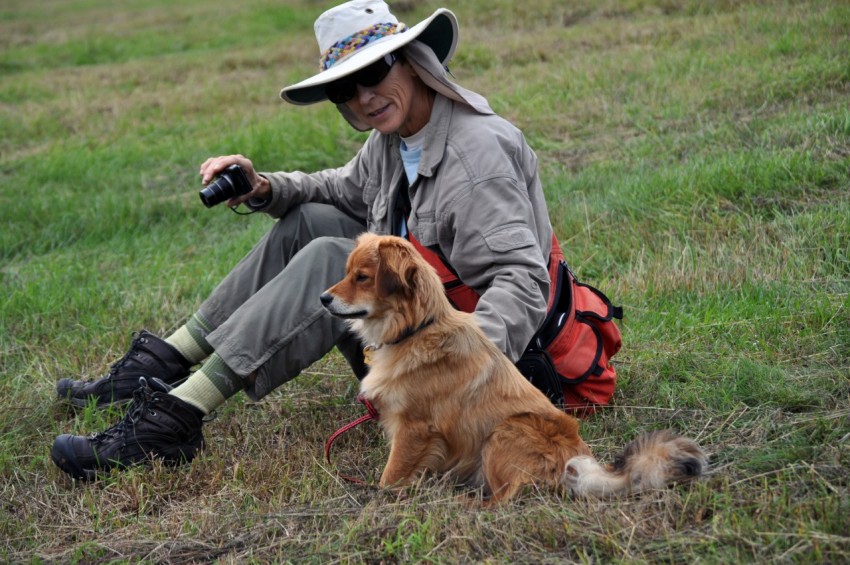
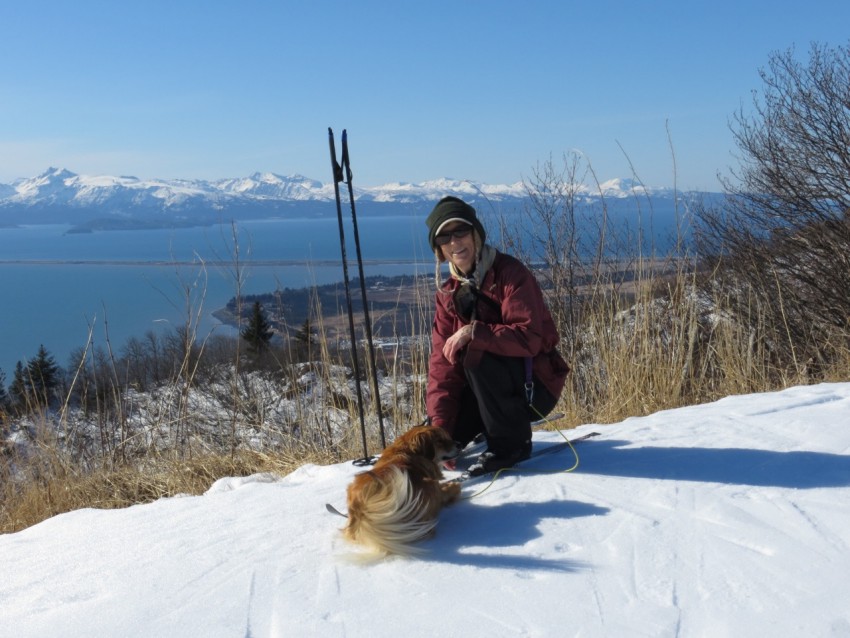
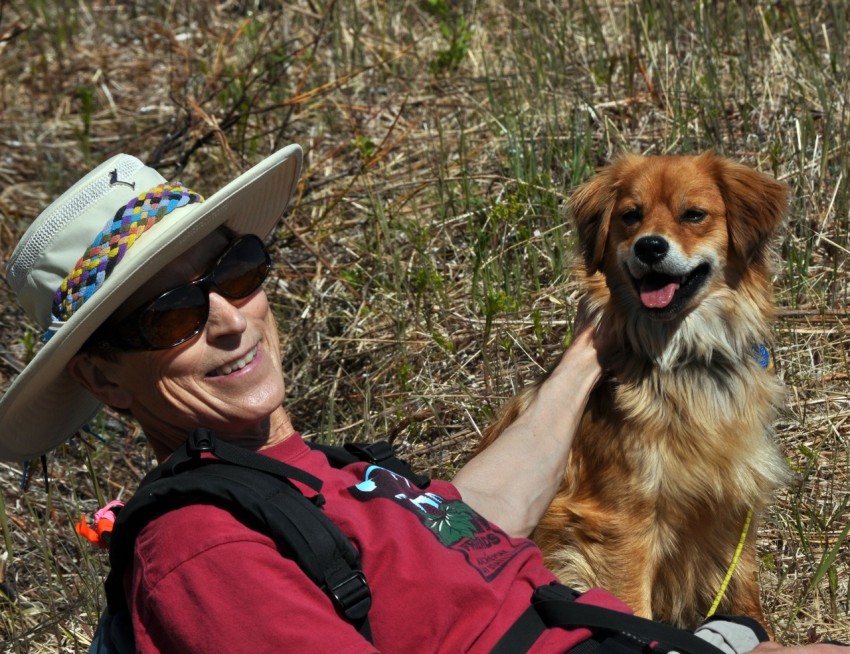
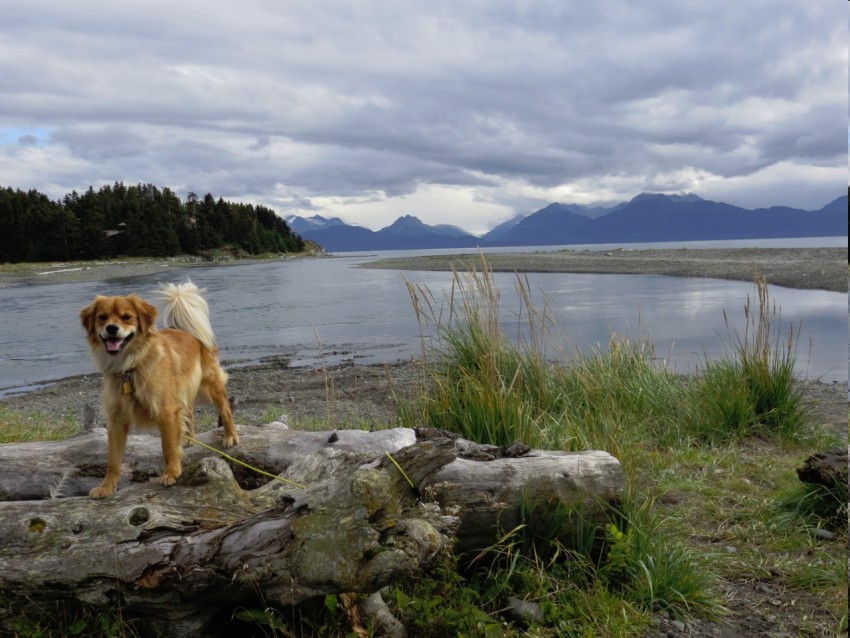
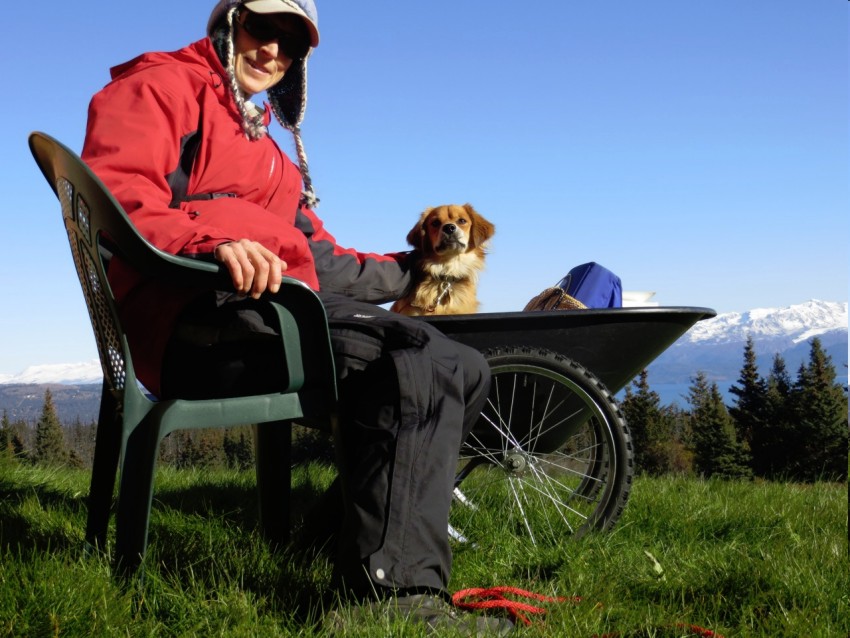
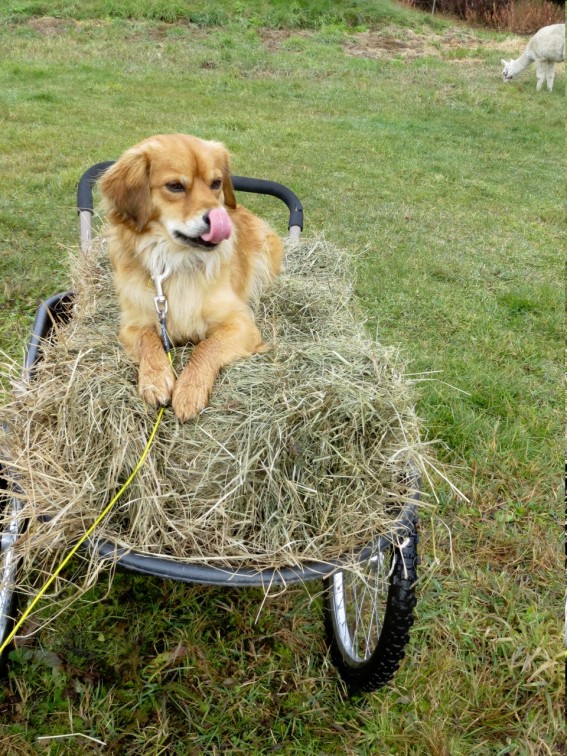
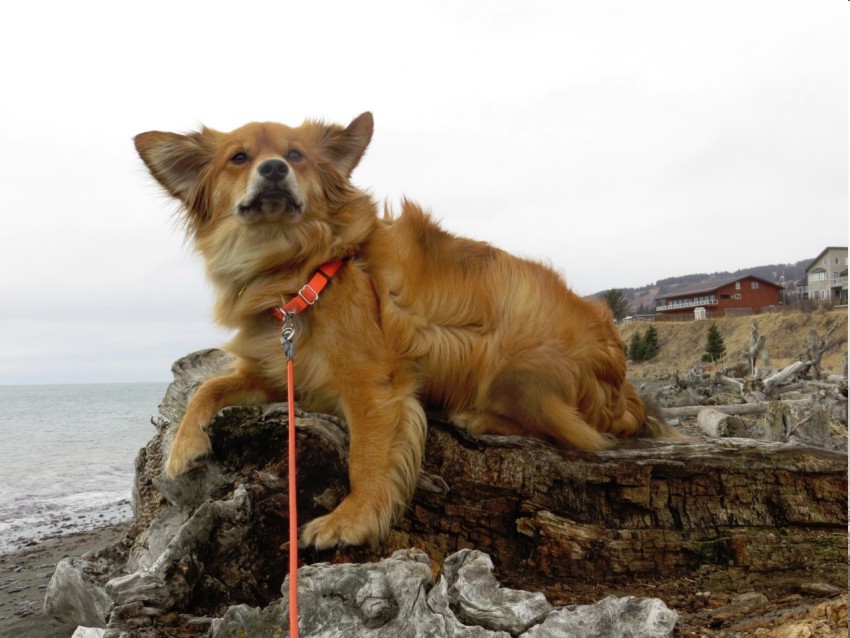
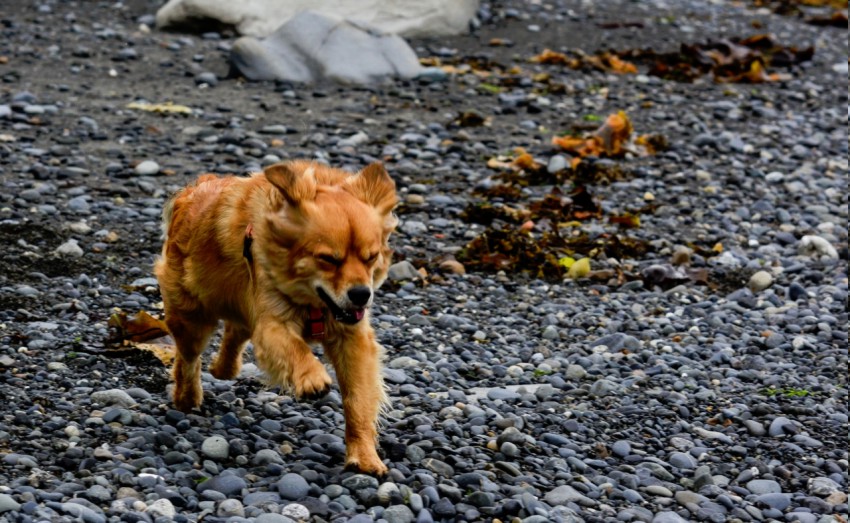
------------------------------
Terry Crowfoot aus England hat eine sehr forcierte Art Lamas nur mit Hilfe des Klickers bemerkenswerte Kunststückchen beizubringen- Die Methode wie Terry Crowfoot arbeitet sieht für mich zwar nicht soo nachahmenswert und ansprechend aus . Es ist trotzdem bei Terry Crowfoot interessant zu sehen was mit der Methode Klicker Training - also rein mit der freiwilligen Mitarbeit des Tieres und ohne jede weitere Einflussnahme- mit einem Lama so alles möglich ist.
hier sind die Links zu meinen Youtube Videos zum Thema
https://www.youtube.com/watch?v=PYOueDGkMec
https://www.youtube.com/watch?v=4st54DSGWFs
https://www.youtube.com/watch?v=xCrFcg8JZeI
https://www.youtube.com/watch?v=A423yyF2KY8
https://www.youtube.com/watch?v=wOkPuuhYokQ
Für mich ist in der Arbeitsweise von Terry Crowfoot zu viel Anforderung an ein Tier, ich finde es nicht artgerecht wenn ein Lama für so viel Zeit am Tag genau das machen soll was der Mensch möchte. Die neueren Videos von Terry mit Oskar sind aber weicher geworden und gefallen mir ganz gut.
Ich finde anstrebenswert wenn ein Lama einfach ein glückliches Lama in seiner Herde auf der Weide sein darf und ich selbst verwende Klickern im Sinne von Nina Faust um Vertrauen zwischen Lama und Mensch herzustellen, Spass miteinander zu haben und das Leben der Lamas mit Abwechslung zu bereichern, mit Hilfe des Klickern gelingt es auch optimal sanft und effektiv die nötigen aber nicht so angenehmen Handlungen im Leben eines Lamas einzuüben und zu shapen, wie z.b Tierarztbehandlungen, Scheren, oder Fussnägel schneiden. Damit bin ich voll zufrieden.
------------------------
Klicker Training wurde entwickelt von Karen Pryor
http://www.clickertraining.com/
Dieses Buch finde ich sehr verständlich und hilfreich:
Die Seele der Tiere erreichen: Erfolgreich kommunizieren mit
positiver Bestärkung
von Karen Pryor
Susan G. Friedman, Ph.D.-www.behaviorworks.org
Videos und Infos auch unter
Susan G. Friedman, Ph.D.
https://www.facebook.com/behaviorworks/

 WILLKOMMEN im Lamaland
WILLKOMMEN im Lamaland Wandern & Coaching mit Lamas
Wandern & Coaching mit Lamas